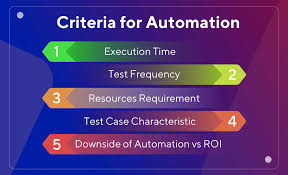Exploring Test Automation Tools: A Comprehensive Guide

In the rapidly evolving landscape of software development, test automation has become indispensable for ensuring faster releases, higher quality software, and efficient use of resources. Test automation tools play a crucial role in this process, offering a range of features and capabilities to support various testing needs. Let's explore some of the prominent test automation tools available in the market today. 1. Selenium WebDriver Selenium WebDriver is perhaps the most widely used open-source test automation framework for web applications. It supports multiple programming languages (Java, C#, Python, etc.) and browsers (Chrome, Firefox, Edge, etc.), making it highly versatile. Selenium WebDriver allows testers to interact with web elements, automate workflows, perform cross-browser testing, and integrate seamlessly with CI/CD pipelines. 2. Appium Appium is an open-source automation tool for testing mobile applications on both iOS and Android platforms. It enables testers to autom...





